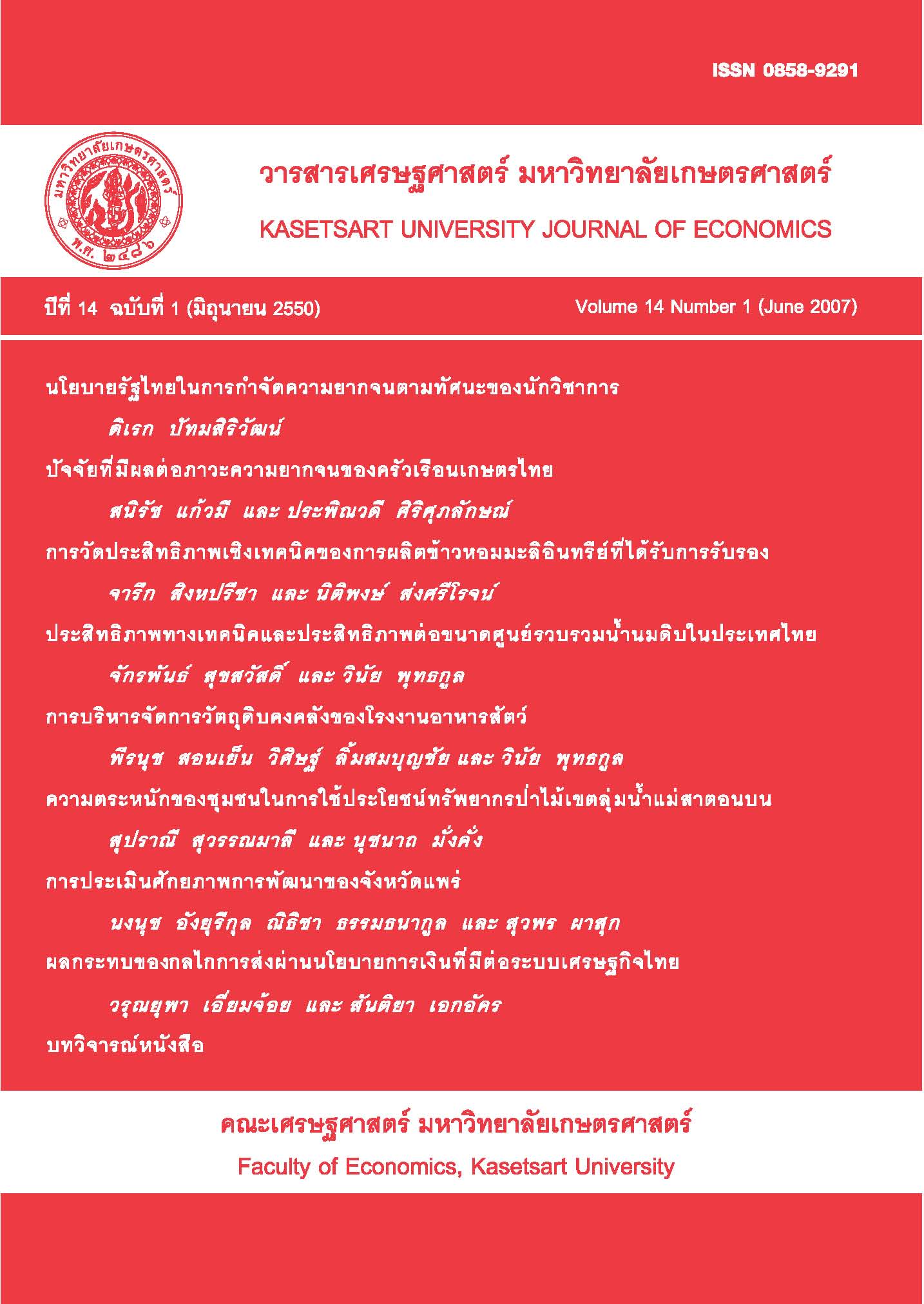นโยบายรัฐไทยในการกำจัดความยากจนตามทัศนะของนักวิชาการ
Main Article Content
Abstract
บทคัดย่อ
บทความนี้อภิปรายวิธีวิทยาว่าด้วยความยากจน การขับเคลื่อนนโยบายและวิพากษ์การทำงานของรัฐไทยในการลดปัญหาความยากจน มีข้อสังเกตว่า มีความไม่เสมอต้นเสมอปลายในการขับเคลื่อนนโยบายในแต่ละรัฐบาล คนจนไม่ได้รับผลประโยชน์เท่าที่ควร การวิเคราะห์ตามสถานการณ์อาจเหมาะสมที่จะนำมาใช้ทำความเข้าใจคนจน ควรได้ทบทวนการใช้ดัชนีเส้นความยากจน และดัชนีวัดช่องว่างความยากจน การวัดความยากจนมีพัฒนาการเป็นที่น่าพอใจ แต่ควรเบนเข็มการศึกษาไปที่กลไกการขับเคลื่อนนโยบายให้มากขึ้น รัฐบาลสมัย พ.ต.ท.ทักษิณ ชินวัตร เอาจริงเอาจังในการประกาศใช้นโยบายกำจัดความยากจน ให้จังหวัดเป็นเจ้าภาพแทนการขับเคลื่อนโดยหน่วยงานระดับกรม แต่จังหวัดยังขาดความสามารถและความพร้อม อาจมีความไม่คงเส้นคงวาในการจัดลำดับความสำคัญปัญหาที่ไม่สอดคล้องกันระหว่างรัฐกลางกับจังหวัด การขับเคลื่อนมาตรการแนวใหม่ตามแนวคิด “เป้าหมายเพื่อคนจน” ท้าทายความสามารถของรัฐบาล มีความจำเป็นต้องพัฒนาฐานข้อมูลคนจน ครัวเรือน เครือข่าย ความเสี่ยง และการบริหารความเสี่ยง การร่วมมือระหว่างหน่วยงานพื้นที่กับฝ่ายวิชาการจะช่วยเพิ่มพลังให้คนจน
คำสำคัญ : การกำจัดความยากจน, เป้าหมายเพื่อคนจน, การขับเคลื่อนนโยบาย, แนวคิด “คนมีน้อย สังคมต้องให้มาก”
Abstract
This paper discusses the methodologies for poverty study. It includes a comment on the policydriver and the governments' performance in connection to poverty eradication. It was noted thatthere was instability of policy commitment across successive governments. The poor did not receivebenefits as much as they should have. Situational analysis may be a proper framework forunderstanding the poor. Meanwhile the poverty line and the poverty gap indicators should be re-examined. The tools for poverty measurement have been improved, but should focus more onpolicy-driving mechanisms. The government during Taksin Shinnawatra's term seriouslyimplemented the poverty eradication policy provided that each province became a host forimplementing the policy. Unfortunately, the provinces were neither capable nor prompt inimplementing the guidelines. There was also the inconsistency in the priority setting of the policybetween the central government and provinces. Pushing the new direction under the concept"targeting the poor" is a challenge for the next government. This would require, among others, thedevelopment of a database that comprises the information on the poor, households, network, risksand risk management. The collaboration between the local governments and academia wouldempower the poor people.
Keywords : poverty eradication, targeting the poor, policy driver, maximin principle
Article Details
The paper is published under CC BY-NC-ND, in which the article is freely downloaded and shared in its original form non-commercially and its citation details are identified.


